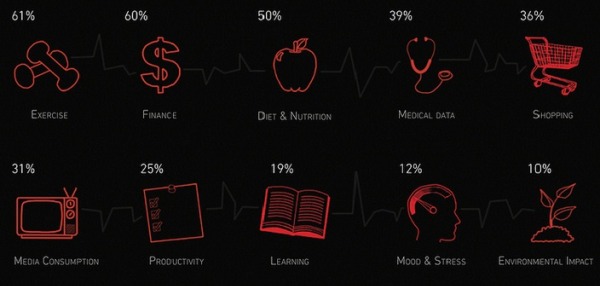Big Data and the Quantified Self
Everything in our life right now is full of data; from the food that we eat to our physical routine. Known as the “quantified self” or QS, it’s actually an emerging trend in big data science. Thanks to advances in mobile technology, it became a phenomenon and people are becoming self-aware. Since smart devices are now embedded with advanced motion sensors, data scientists can benefit from the personal data collected from these devices. In fact, Ida Sim, MD PhD, Co-Director of the Biomedical Informatics at the University of California, San Francisco (UCSF) believes that data must be visualized, interpreted, and analyzed. “We would like to have more people do this, so we can learn more,” she said in a feature published on UCSF.edu. The data pooled from self-tracking can actually be used for the greater good and improve our overall well-being.
With that said, is quantifying oneself just a passing fad or gimmick? Can technology and big data really help people live healthier lives?
Smarter Devices
Smartphones have contributed to the rise of fitness trackers and wearable technology. At the Consumer and Electronics Show (CES 2014) held in Las Vegas, manufacturers like Garmin, Sony, and LG Electronics have showcased the future of self-tracking devices. They claim to be “smarter” and “fitness-centric,” which appeals to self-trackers. However, Apple’s co-motion sensor chip, the M7, is a revolutionary technology in itself since it placed activity tracking into the mainstream. As mentioned on O2’s specs page for the iPhone 5S; the co-processor can handle motion tasks effectively to preserve battery life. Coupled with its Core Motion API, this helps developers to create better activity-tracking applications. Some experts believe that this technology has helped develop the next generation of wearable fitness trackers.
Better Applications
Aside from these devices, mobile applications or apps are also essential tools in self and activity tracking. They basically measure and collect data from users, which is sent and stored in the cloud. With their help, our phones and other devices are turned into blood glucose, heart, and even breathing monitors. Jawbone’s Vice President, Travis Bogard, said in a Mashable article that “everyone wants to be better” but, we don’t have an exact baseline on understanding ourselves. Sleep is a perfect example of how to understand ourselves. Each person is unique and we all have different sleep requirements. That’s why the need to develop better apps is important.
Apps like Beeminder, Lift, and Azumio are slowly changing the way they monitor our health. From giving users a complete picture of their overall health to keeping you track of their goals, they try to give data in real time, which makes it relevant for self-trackers.
Quantifying Big Data
Today, “personal Big Data is growing exponentially and it’s creating the Quantified Self Space,” according to Bogdan Gerya, CEO of OptimizeMe. Unfortunately, users are left with raw data that they can’t even interpret. If we look at it, how will it be relevant to our lives? Well, applications like OptimizeMe have included analytical tools to interpret these data. Now, the personal big data can be quantified by users and find relevance to it. This also helps them understand what areas of their lives need to be addressed or improved. However, quantifying these huge data sets can also post its own set of challenges. Facebook’s Graph Search will take years before the entire map will be graphed, Zuckerberg said in an interview with Network World. Also, concerns about privacy are also being raised by many. Despite these challenges, the need to quantify big data is still a priority.
Data will always help us find clarity in times of uncertainty, especially when making critical decisions. It can also help us measure and optimize ourselves. With the help of technology, collecting new and relevant data can help advance the field of medicine and healthcare. In time, data scientists and researchers will be able to use what they gathered to find a cure for life-threatening diseases and making the world a better place to live in.

